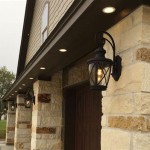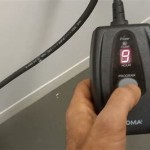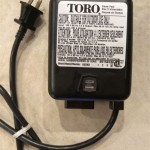How to Install an Outdoor Breaker Box
Installing an outdoor breaker box is a crucial step in any electrical project that involves powering outdoor amenities or appliances. From lighting up your patio to providing electricity for a hot tub or workshop, having a dedicated outdoor breaker box ensures safety and convenience. This guide will provide a comprehensive overview of the process, covering essential steps and considerations for a successful installation.
1. Planning and Preparation
Before embarking on the installation, careful planning is essential. Understanding the project scope and the specific requirements will ensure a smooth and efficient process.
a) Determine the Electrical Load: Calculate the total amperage needed for all appliances and devices that the outdoor breaker box will power. This will determine the size of breaker box and the capacity of the circuit breakers required. Consult with a qualified electrician to ensure accurate load calculations.
b) Choose the Right Location: The location of the outdoor breaker box is crucial for accessibility and safety. Select a spot that is: * Easily accessible for maintenance and service. * Away from potential hazards like water sources or flammable materials. * Protected from direct sunlight and extreme weather conditions. * Compliant with local building codes.
c) Gather Necessary Materials: Depending on the project, the following materials will be required: * Outdoor-rated breaker box with the appropriate amperage capacity. * Circuit breakers for each appliance or device. * Conduit pipe and fittings for wiring. * Grounding rod and wire. * Electrical tape and wire nuts. * Tools for installation, such as a wire stripper, crimping tool, and screwdriver.
2. Installation Process
Once you have prepared the location and gathered the necessary materials, you can start the installation process. This involves several steps, each requiring careful attention to detail.
a) Mount the Breaker Box: Use appropriate mounting hardware to secure the breaker box to the chosen location. Ensure that the box is level and securely fastened. Consult the manufacturer's instructions for specific installation guidelines.
b) Install the Grounding Rod: Drive the grounding rod into the ground at least 8 feet deep, ensuring proper contact with the soil. Connect the grounding wire to the grounding rod and then to the breaker box's grounding terminal.
c) Run Conduit and Wires: Run the conduit pipe from the main breaker panel to the outdoor breaker box. Use appropriate fittings to connect the conduit sections and ensure a secure and watertight connection. Pull the wires through the conduit, making sure to use the correct wire gauge for the intended load.
d) Connect Wires to Circuit Breakers: Inside the breaker box, connect the wires to the appropriate circuit breakers. Use wire nuts to secure the connections and ensure proper polarity (hot, neutral, and ground). Refer to the breaker box and circuit breaker instructions for specific wiring configurations.
e) Test the Installation: Once all wiring connections are complete, test the installation by turning on the main breaker and checking for proper operation of the circuit breakers. Ensure that all outlets and appliances are receiving power as expected.
3. Safety Precautions
Safety is paramount when working with electricity. Always follow these essential precautions:
a) Disconnect Power: Before starting any wiring or installation, disconnect the power to the main breaker panel. This will prevent any risk of electric shock.
b) Use Proper Tools: Use insulated tools designed for electrical work, and avoid touching bare wires or electrical components directly. Avoid using tools with damaged insulation.
c) Wear Protective Gear: Wear insulated gloves, safety glasses, and non-conductive shoes to protect yourself from electrical hazards.
d) Consult a Professional: For any complex or high-voltage installations, it is essential to consult a licensed electrician. Their expertise ensures a safe and compliant installation.
Installing an outdoor breaker box requires careful planning, meticulous execution, and a strong emphasis on safety. By following these steps and taking proper precautions, you can ensure a successful and reliable installation that meets your outdoor electrical needs.

How To Connect A New Circuit Diy Family Handyman

How To Add An Outdoor Electrical Box Diy Family Handyman

How To Connect A New Circuit Diy Family Handyman

How To Install A Sub Panel Next Existing Main

Wiring A Breaker Box Boxes 101 Bob Vila

Organizing A Panel Box Fine Homebuilding

Setting Up A Panel On The Outside Of Home

Electrical Feed To Panels

How To Install An Outdoor The Home Depot

How To Connect A New Circuit Diy Family Handyman







